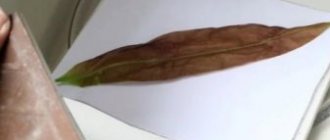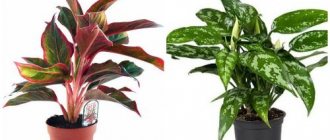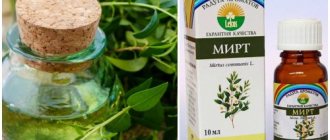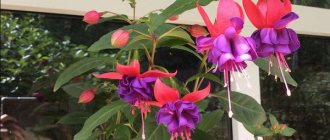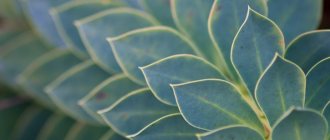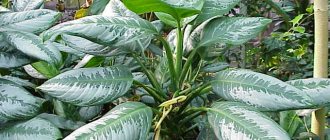There are varieties of plants that are particularly decorative and are popular with gardeners. Calathea looks especially elegant; just look at its appearance to be convinced of this. At the same time, it can be demanding in terms of conditions of detention. The slightest mistakes can lead to adverse consequences. Let’s say that the wrong soil can cause the calathea’s leaves to dry out and curl.
Transfer
For calathea, the soil selected is light and fluffy; it should allow water and air to pass through well. You need to add a little pine needles or wood ash to the garden soil. The ratio of soil to needles is 2:1. To aerate the soil, it is mixed with coarse sand or perlite.
Take a small flowerpot, a few cm wider than the previous one. At first, the plant will stop growing so that the root system completely fills the pot. It's better if it's transparent. It clearly shows the development of roots, the condition of the soil, and the presence of condensation. There must be holes at the bottom for the drainage of excess liquid. Place a tray under the flowerpot to prevent it from spilling onto the windowsill or floor.
To remove a plant from an old flowerpot, squeeze it with a little force in your hands. Then the soil is separated from the wall and is easier to get out. Calathea roots must be washed under running warm water and then inspected. The affected areas are cut off with a sharp knife or scissors. To prevent wounds you need to treat:
- charcoal;
- crushed activated carbon;
- a weak solution of potassium permanganate;
- iodine solution.
How to cure calathea?
If the calathea gets sick, the leaves dry and curl, their tips become brittle and brown, then the plant needs to be revived. To do this, you need to pay attention to three things: light, humidity and drafts.
Calathea does not like direct sunlight to fall on it, but it cannot live without light at all. Therefore, find the right place for it, and then you will avoid the problem of drying leaves.
In our apartments there is dry air, which is contraindicated for Calathea. Even if you regularly moisten the plant by spraying or wiping the leaves with a damp sponge, you will not solve the problem. You can adapt Calathea to the humidity level of your apartment. Spray the plant and then cover with plastic. Repeat the procedure every day, and then start opening the plant for 10 minutes, then 30, and so on, gradually increasing the duration of your stay in the “open” air. Calathea, whose leaves dry out, quickly revives.
Another reason for leaves drying out is the presence of drafts. If the temperature on your windowsill is below 16 degrees, then you should not ask the question why calathea leaves curl. This is now obvious.
Calathea whose leaves dry out and curl may also lack sunlight. This is a capricious plant, and you will have to determine its location experimentally. It is important to find a middle ground. The flower should not overheat in the sun, be placed in direct sunlight, and still need light. Leaves may curl when the plant is very stuffy. In this case, you need to moisten not only the soil, but also the leaves, move the flower from the windowsill (especially in summer) and ventilate the room well. But while airing, the flower should be removed from the windowsill. This procedure must be repeated regularly, combined with feeding and spraying.
How to read plant signals correctly
An attentive gardener will notice that calathea leaves dry and curl differently.
Therefore, daily communication with your pets helps to catch the signals sent through the leaves. If a plant has been living in an apartment for a long time, but suddenly the very tips of its leaves begin to dry out, the reason is not difficult to find. The humidity has changed, the heating may have been turned on, and the air became drier. Or maybe the plant was moved to a new place, it protests. If the calathea's leaves are simply curled up, it may be that too much light is falling on the plant and it is protecting itself, leaving less surface area for photons. When the plate not only curls, but darkens and acquires a brown tint, then the plant does not have enough moisture in the pot. If at the same time the leaves of the calathea dry, it means that the air is also dry. If you don't take action, the plate will dry out and fall off.
Are there spots on the leaves? Remember when you moistened, whether large spots formed on the leaves. Perhaps a ray of sunlight hit them and, like through a lens, caused a burn.
Symptoms and causes
Based on the symptoms, you can determine what kind of disease has affected the flower. The signs are usually bright, it is difficult to confuse the disease if the symptoms are pronounced. When looking for the cause of diseases, refer to the following list.
- Brown spots. This is late blight. This disease affects the flower with improperly organized ventilation; the disease can also be caused by excess moisture in the soil. At the beginning of the disease, brown spots appear on the leaves, and gradually the leaves of the Kalanchoe bend upward.
- White plaque. This sign most likely indicates powdery mildew. This, unfortunately, is a common diagnosis for Kalanchoe; a fungal disease most often occurs due to too humid air in the room. At first it resembles a layer of dust, and if the gardener does not examine the Kalanchoe well, he may not attach any importance to the coating. But over time, the “dust” begins to look like flour. Because of this disease, the plant sheds its leaves and withers.
- Gray rot. If the leaves curl and rot and the plant becomes soft, then it is gray rot. This leads to mold growing on the leaves. This kind of rot is precisely gray in color, which explains the name.
- Stem rot. When Kalanchoe trunks dry out and darken, this is stem rot. First, a small black dot appears on the trunk, then it grows to such a size that the entire trunk turns black. This happens when the temperature drops sharply. If just such a phenomenon occurs in winter, the plant is in danger of death.
- Round small spots. This is probably ring spotting. And this, unfortunately, is a death sentence for the plant. It dries up and dies, so don’t wait until it completely wilts; get rid of the diseased flower as quickly as possible.
But not only diseases attack Kalanchoe. The leaves turn yellow and curl due to attack by pests. If the tops of the plant are covered with black mold, and waxy discharge appears on the leaves and stem, it is a mealybug. If the flower has almost dried out in a short time, and its leaves are constantly curling, it is probably a scale insect. The leaves turn yellow from the mite, and if the Kalanchoe first turns yellow and then drops its leaves, it is probably necessary to fight it.
Why do Kalanchoe leaves turn yellow, dry and wither?
Pathologies can be easily detected by the appearance of the culture. With the development of diseases in Kalanchoe, the leaves may turn yellow, dry out, wither or fall off. Sometimes the plant loses its ability to bloom.
A healthy flower has excellent decorative properties
These symptoms require timely initiation of treatment. Otherwise, the Kalanchoe may dry out completely.
Calathea care at home
As we have already written, caring for calathea requires care, and not everyone can handle it. First, let's talk about how to water calathea.
- The main thing to remember is that calathea should not be watered with cold water. If you violate this rule for quite a long time, the flower may die. The water temperature should be room temperature.
- Before watering, boil the water to reduce its acidity. There are many ways to soften water, but this one is the simplest.
- Monitor the condition of the soil in the pot. If the top layer has dried out, then the plant needs to be watered.
- You should not pour a lot of water, its excess leads to rotting of the roots of the flower. The ideal option is to install a tray with water under the pot.
- The frequency of watering also depends on the time of year. In summer it is 2-3 times a week, and in winter - once every 7-9 days. Monitor the condition of the soil and leaves of the flower; they will tell you whether there is a need to water the plant.
Lighting level
Regardless of the type, calathea needs good lighting. But there is a small nuance: direct sunlight burns the leaves, they lose their color and curl. And lack of light leads to slower leaf growth. The best option is partial shade. If you are not sure that there are places with similar conditions in your apartment or house, you should not give preference to calathea.
Temperature for harmonious growth
A flower needs comfortable home conditions; it is not so easy to choose the temperature it needs. For normal flower development it should be 15-25 degrees
It can be difficult to choose, but it is really very important, so take the advice responsibly
A sudden change in air has a detrimental effect on the flower. If your calathea leaves wither and begin to rot, it means they have been affected by temperature changes. The formation of drafts is also unacceptable. Do not open windows if there is a plant on the windowsill.
The flower cannot withstand temperatures below ten degrees and above twenty-five. This means that in winter and summer you need to regularly measure the room temperature.
Humidity when growing a plant
Humidity is another important factor to consider, along with air temperature and amount of lighting. The tropics are the homeland of calathea. And as you know, tropical countries have quite high humidity. The ideal air humidity for the plant is 90 percent. However, achieving this figure in an apartment is almost impossible. But flower growers have found a way out: they grow calathea in aquariums and terrariums. If this method does not suit you, then the humidity level can be reduced to 55-60 percent.
The plant should be sprayed three to four times a week. Water temperature is at least 26-28 degrees. The leaves can also be wiped with a sponge, but drops of water should not remain on the plant, as this leads to stains.
Feeding and choice of fertilizer
An integral part of care is feeding the plant.
- Purchase liquid fertilizers.
- Dilute with water in a 1:1 ratio.
- The flower is sensitive to nitrogen and calcium, keep this in mind before purchasing fertilizer.
- An overdose of microelements has a negative effect on plant growth, so you should not overfeed it.
The flower has a superficial root system, which needs to be replanted once every 1-2 years. The optimal time for it is the end of winter or the beginning of spring
There should be no lime in the ground; good drainage is important. You can purchase a ready-made mixture in gardening stores.
The pot should not be deep. Do not press the soil too hard, otherwise the roots may suffocate.
Reproduction methods
There are several ways to propagate the plant at home. You can choose the best one for you and start implementing it.
- Dividing the bush is the most popular method. This method should be used during the transplantation period. Divide the mother plant into parts and root each of them in a separate container. Then it is covered with film and placed in a warm place. Remove the film after the calathea takes root and begins to grow.
- When cutting, separate the above-ground cutting from the mother plant. Place the cuttings in a pot with moist soil and cover with film. When the cuttings take root, you can remove the film and begin to fully care for the plant.
- The most difficult way is propagation by seeds. Sow the seeds in a mixture of sand and leaf soil in a ratio of 1:2. Keep them at a temperature of 21-25 degrees.
Diseases and pests
It is worth considering the most common diseases and pests.
- The most common type of pest that attacks calathea is thrips. They appear most often when there is insufficient humidity, but in the presence of high temperatures. If the plant is spotted with light spots, it’s time to take action. The spots may change color to a darker color, after which the foliage will begin to dry out and fall off. Special means - insecticides, soap solution and fertilizing - will help to cope with the problem.
- If the plant is covered with a black film, it means that it is being overcome by sooty fungus. Film formation does not allow air circulation, disrupts photosynthesis and the plant dies. A solution of soap will help get rid of the misfortune.
- If you notice small brown insects on a flower, this is a scale insect invasion. They suck the life juices from the leaves, after which the leaves dry out. In this case, special equipment and a soap solution will help.
Another symptom that raises questions is leaf curling and drying out. This is a sign that the care of the plant has been disrupted or the placement location has been chosen incorrectly.
You should pay attention primarily to the following factors:
- high humidity;
- draft;
- sunny;
- irregular or insufficient watering.
If all these shortcomings are eliminated, the calathea will gradually return to its original state.
You can learn how to transplant calathea by watching the video below.
Why are your calathea leaves drying out and curling?
The calathea plant obeys only experienced and skilled gardeners. If the leaves on the calathea dry out and curl, this is a signal of improper care. Before you buy a beauty, you need to calculate your strengths and take a critical look at your experience in caring for capricious plants. There is nothing sadder than dying flowers in an apartment. Caring for calathea is difficult, but it will make you even more happy to have a beautiful, healthy flower.
How to read plant signals correctly
An attentive gardener will notice that calathea leaves dry and curl differently. Therefore, daily communication with your pets helps to catch the signals sent through the leaves. If a plant has been living in an apartment for a long time, but suddenly the very tips of its leaves begin to dry out, the reason is not difficult to find. The humidity has changed, the heating may have been turned on, and the air became drier. Or maybe the plant was moved to a new place, it protests.
If the calathea's leaves are simply curled up, it may be that too much light is falling on the plant and it is protecting itself, leaving less surface area for photons. When the plate not only curls, but darkens and acquires a brown tint, then the plant does not have enough moisture in the pot. If at the same time the leaves of the calathea dry, it means that the air is also dry. If you don't take action, the plate will dry out and fall off.
Are there spots on the leaves? Remember when you moistened, whether large spots formed on the leaves. Perhaps a ray of sunlight hit them and, like through a lens, caused a burn.
The leaves need to be examined for insect infestation. The ubiquitous aphids, spider mites, thrips, and whiteflies are dangerous. At the same time, the whitefly is the most difficult insect to expel.
At the first signs, as soon as the tugor of the leaves is disturbed, you need to look for the cause before the leaves change their appearance. The cause of calathea disease can be:
- watering with cold or hard water;
- lack of nutrition or inconsistency of the soil with the requirements of the plant;
- sudden change in conditions of detention.
Pests on Calathea
If we talk about the indoor calathea flower, pests in the form of parasites are most often encountered due to various problems in caring for and growing the plant:
- Spider mite. Symptoms of the parasite include a white coating on the underside of the leaves. Over time, cobwebs become noticeable on the plant. The tick is very small and difficult to see. The leaves first turn yellow and then begin to fall off. The pest prefers dry air, so the flower must be sprayed frequently. In addition, mechanical treatment with an insecticidal agent is carried out.
- Shield. When infected, small round plaques appear on the stem and leaves. Over time, the leaves turn pale and dry out. The plant can be cured by treating it with a solution of laundry soap. To consolidate the results, it is necessary to spray with Fitoverm.
- Thrips. Small dots appear on the leaf plate, which gradually turn into spots. Small oblong-shaped insects that move in jumps are noticeable on the soil. If parasites are detected, it is necessary to rinse the plant in the shower and spray it with Intavir. To consolidate the result, you can repeat the spraying twice. The soil in which the flower is located is treated with the same solution.
Signs of plant damage by aphids
If pests are detected early, it is not difficult to combat them, since there are many insecticidal and folk remedies.
Calathea (home care, diseases, treatment are described above) is an attractive shrub that is often used as a decorative ornament. When the leaves of a calathea flower curl, what every gardener should know to do. The plant requires increased attention, and it must be grown taking into account all the rules.
Improper care or conditions
The health of the plant is primarily affected by the quality of its care. Drying leaves of calathea can also be the result of an incorrect approach to cultivation.
Dry air
Calathea needs a lot of moisture in the air. It is optimal to provide a humidity of at least 85–90%. If it is impossible to raise it to such a level, the tips of the calathea’s leaves begin to dry out.
To prevent this condition, you should resort to hydration measures:
Spraying with water at room temperature. It is highly desirable that it is not hard; it is better to carefully filter it or let it sit for 24 hours. Spraying should be daily.
Increase moisture by installing a humidifier. This is the best option that allows you to control the humidity level.
Installation of pallets with moistened expanded clay. You need to place a pot of calathea in such a tray.
It is important that the container has drainage holes.
Draft
In addition to the fact that this plant suffers from dryness, it can also begin to dry out after being exposed to a draft. Regular exposure to sharp wind currents is especially dangerous. If the room has to be ventilated, you need to ensure that drafts are not created.
Sudden temperature changes
In the room where the pot with calathea is located, there should be a stable temperature within +16. +19°С. If sudden changes in temperature occur, the plant may suffer and begin to show symptoms such as dryness and curling of the foliage.
Exposure to direct sunlight
Dry leaf blades may indicate sunburn. This situation is possible with intense exposure to sunlight. Affected leaves may begin to fall off the stems. To help the plant, you should move it a little further from the window.
Insufficient watering
As stated above, calathea loves moisture. This parameter applies not only to air, but also to soil. Watering should be plentiful, since the roots of this plant need a sufficient amount of moisture. However, you should not achieve excessive moisture. The substrate should be watered as the top ball dries, preventing the earthen ball from hardening.
Lack or excess of fertilizer
Feeding is very important for calathea. For its healthy condition, it is necessary to apply fertilizers in the correct amount. The established measure can neither be exceeded nor lowered, as this will negatively affect the condition of both the leaves and the plant as a whole.
When applying fertilizing, you need to pay attention to their frequency. So, from the beginning of spring to the end of summer they need to fertilize the soil every 14 days
From the beginning of autumn to the end of winter, the frequency is reduced to 1 time every 1.5 months.
Incorrect soil selection
Perhaps the reason for drying leaf plates lies in the initially incorrectly selected substrate. Calathea does not develop well in acidic soils containing lime. The optimal soil for it will be soil prepared from soil and pine humus in a 2:1 ratio. It is also advisable to add additives to this mixture for better air permeability. An excellent option would be sand in large fractions or perlite.
Why can a plant get sick?
If we talk about a houseplant called calathea, diseases and pests can appear on it only due to improper care. This is precisely what experienced flower lovers who successfully grow various varieties never cease to repeat.
Calathea is a perennial plant up to 1.5 m high
First of all, attention should be paid to watering. Excessive soil moisture, cold or hard water are factors that can negatively affect the quality of flower growth and development. After watering, there should be no drops left on the leaves of the plant, as this is not always beneficial.
The composition of the soil also plays a significant role. Oily and rotten soil can harm the growth of calathea. The cause of rotting is almost always excess liquid that is retained in the soil due to poor drainage. If moss, mold or fungus appears on the surface, they should be removed immediately.
Another name for calathea is prayer flower or praying grass.
The condition of the flower is also reflected in the correctly chosen pot. A small container will result in slower growth. A pot that is too wide and high also negatively affects the life of the plant.
Leaves can dry out due to lack of lighting or high temperature in the room. Moreover, each plant variety requires compliance with certain rules.
Fertilizers play a special role - they must be applied according to a certain schedule, in the proportions specified by the manufacturer. When using folk remedies as fertilizers, mineral complexes must be added in much smaller quantities.
Note! An overdose of nutrients is just as harmful as a deficiency.
Diseases
The plant is susceptible to Fusarium wilt. It is characterized by yellowing and drying of the leaves. The stems may rot and turn black. The disease cannot be treated, so the flower is destroyed. This will help preserve other houseplants.
With excessive watering, powdery mildew settles. It manifests itself as white spots on the plates that appear periodically. First, the plant is isolated and the affected parts are removed. After this, it is treated with Bordeaux mixture.
If calathea is transplanted into contaminated soil, fusarium appears. It leads to rotting of the root system, which is manifested by yellowness and wilting of the green part. To help the flower, it is transplanted into new soil. The flowerpot is washed with a weak solution of potassium permanganate. The shoots are treated with Benomyl.
If bumps appear on the back of the sheets, rust is suspected. It is caused by waterlogging, which causes rust fungus spores to multiply. Leads to wilting and falling of leaves. Treatment method – Vectra.
Important! In rare cases, viral diseases . They appear when brought in by insects from the street. Viruses manifest themselves as mosaic and deformation of leaves, slow growth, and yellowness. There are no specific drugs for treatment, so the plant is thrown away.
Lighting
Incorrectly chosen lighting can not only spoil the appearance of the calathea, but also lead to its death. Both a lack and an excess of light are harmful to it.
In the wild, calathea grows under the canopy of tall trees, which prevent the sun's rays from burning its delicate leaves.
But the lighting should be diffused and bright enough. If it is deficient, variegated leaves lose color and may become uniformly green. But direct sunlight leaves burns on the leaves. Leaves curl and become covered with dry spots.
Such leaf blades are no longer restored. Without shading, especially in the summer, the plant may lose leaves and die.
Caring for a flower to restore it
Is it possible to grow a plant if only a stem remains from the flower? - Can. Experienced flower growers tell how Calathea “died” in the winter, and in the spring Calathea without leaves “came to life” again. It is important to maintain the necessary conditions for the survival of the flower at all times. First of all, it is worth remembering that Calathea is an inhabitant of tropical forests and grows near bodies of water, for this reason it loves high humidity. Therefore, dried leaves can simply mean that it does not have enough water. Try watering the plant more often with warm water that has stood for at least ten hours and spraying it once or twice a day. If you are sure that the edges of the leaves are drying out due to lack of moisture, try this option: pour wet pebbles onto a tray, and place a flower on top so that it does not touch the water - too much water can cause the Calathea to rot. Or cover the flower with a plastic bag - high humidity will remain under it.
This will make the plant more vulnerable, so be attentive to the slightest changes in its appearance: it can burn if it stands in the sun for too long. If Calathea stands in the dark, its leaves will not only dry out, but also curl.
The process begins from the tips, so you should carefully monitor the flower in order to understand what the problem is before the process becomes irreversible and you have to get rid of all the dry leaves. If you place Calathea in direct sunlight, it will begin to fade in appearance and the pattern will slowly fade. For this reason, the best location for it is partial shade. Find Calathea a place where she feels comfortable and she will soon return to her healthy appearance. A thermometer is useful to check the ambient temperature: the comfortable temperature for Calathea is 16-22°C. It is also worth checking whether there are drafts in the room: the plant does not tolerate them.
There is a very beautiful ornamental plant, which, first of all, attracts with its leaves, or rather, with the fancy patterns on them. This is Calathea. Are your plant's leaves drying out and curling? Is it losing its appeal? This deficiency immediately becomes noticeable, and gardeners strive to cure the plant as quickly as possible. However, to do this, you need to know its features.
What does Calathea like and dislike?
This is a capricious and demanding flower. Calathea grew in Central and South America, which means it needs a bright place, but without direct sunlight. She also loves warmth, since her homeland is warm regions. The optimal temperature is +20…+22°, but not lower than 18° and not higher than 25°. It does not tolerate drafts, does not tolerate dry air and dry soil. It should not be placed near a heat source - a radiator, stove or fireplace, or on a cold windowsill. In summer, you should also not take the flower out onto the balcony. Heat during the day and lower temperatures at night are stressful for calathea, which gets sick from temperature changes. This also applies to watering. Calathea should not be watered with cold water. Slightly warm, settled water is best.
What else does calathea not like? Leaves dry out due to lack or excess of moisture. The soil under the flower should always be slightly moist.
Flower propagation methods
Calathea is difficult to propagate, but if you wish and properly care for the planting material, you can get a new plant. There are three methods of propagation: dividing the bush, cuttings and using seeds.
Cuttings
It is advisable to propagate the flower using cuttings in spring. A cutting is cut from an adult plant, the length of which should be within 15 cm. The planting material should have several leaves and growth points. You can also cut a leaf, which, like the cuttings, is planted in a separate container with a damp substrate and covered with a transparent film or plastic bottle.
Dividing the bush
This is the most common method of propagation, which is carried out during transplantation. The plant is removed from the flowerpot and the rhizome is cut with a sharp sterile knife so that several full-fledged specimens with leaves and roots are obtained.
The resulting bushes are planted in separate flowerpots with a moistened substrate.
The optimal temperature is +22-24˚С. Watering and spraying should be carried out regularly and the flowerpot should be kept in partial shade. Fertilize should be done once every three weeks.
Seeds
The seed propagation method is the most difficult, because planting material has a short shelf life and poor germination. Sow the seeds in a mixture of sand and leaf soil. They are slightly buried in the ground and covered with film.
Calathea seeds
The container is transferred to a warm room with a temperature of at least +22˚С. Sprouts can be expected one month after planting.

